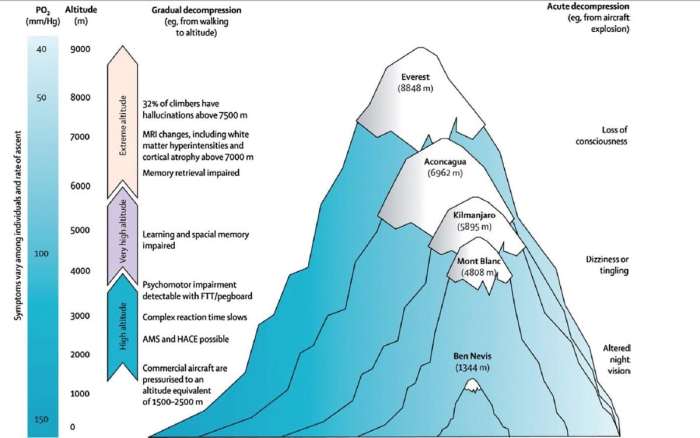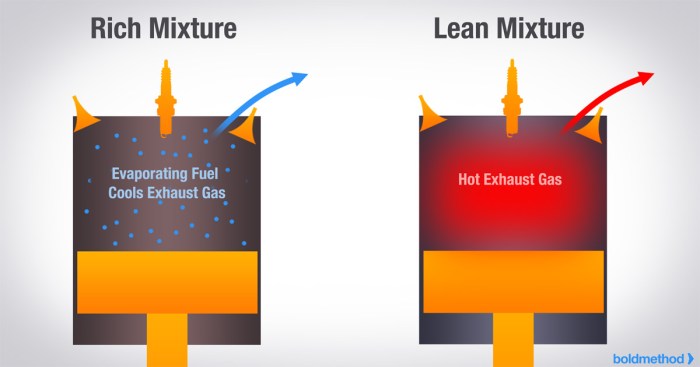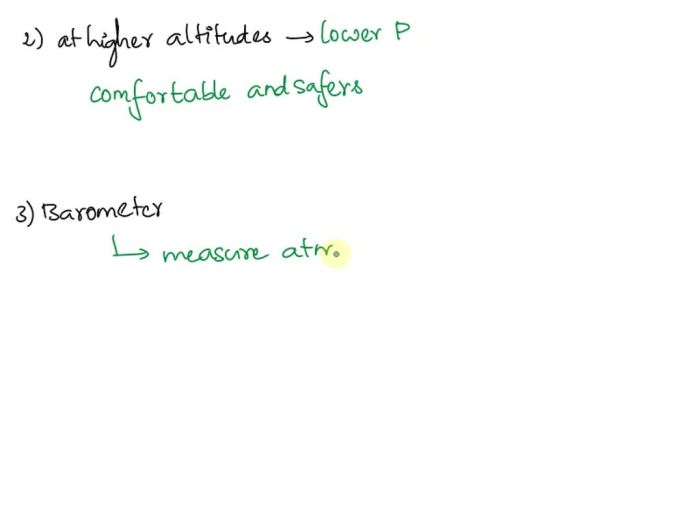At high altitudes an excessively rich mixture will cause the – At high altitudes, an excessively rich mixture can have detrimental effects on aircraft engine performance and longevity. This article explores the consequences of an excessively rich mixture at high altitudes, including potential damage to engine components, and provides strategies for maintaining an optimal fuel-air mixture in these conditions.
As altitude increases, air density and oxygen levels decrease. To compensate for the reduced oxygen, a richer fuel mixture is required to maintain engine power. However, an excessively rich mixture can lead to a number of problems.
Engine Operation at High Altitudes: At High Altitudes An Excessively Rich Mixture Will Cause The

At high altitudes, the air density decreases significantly, resulting in a reduction in oxygen levels available for combustion in an engine. To compensate for this reduced oxygen, an excessively rich mixture is typically used.
An excessively rich mixture contains more fuel than the stoichiometric ratio, which is the ideal ratio of fuel to air for complete combustion. This additional fuel helps to ensure that there is enough oxygen available to burn all of the fuel, even at high altitudes where oxygen levels are lower.
Consequences of an Excessively Rich Mixture
While an excessively rich mixture can help to ensure that the engine runs smoothly at high altitudes, it can also have some negative consequences. These consequences include:
- Increased fuel consumption
- Reduced engine power
- Fouled spark plugs
- Damaged valves
Mixture Management Techniques, At high altitudes an excessively rich mixture will cause the
To avoid the negative consequences of an excessively rich mixture, it is important to use proper mixture management techniques at high altitudes. These techniques include:
- Using a mixture control to adjust the fuel-air ratio
- Using an oxygen system to supplement the oxygen available in the air
Case Studies and Real-World Examples
There have been several aircraft incidents and accidents that have been caused by excessively rich mixtures at high altitudes. One such incident occurred in 1999, when a Beechcraft King Air 350 crashed in Alaska. The investigation into the crash found that the pilot had been using an excessively rich mixture, which led to fouled spark plugs and a loss of engine power.
Expert Answers
What are the symptoms of an excessively rich mixture at high altitudes?
Symptoms of an excessively rich mixture at high altitudes include rough engine operation, spark plug fouling, and increased fuel consumption.
What are the potential consequences of an excessively rich mixture at high altitudes?
An excessively rich mixture at high altitudes can lead to engine damage, including spark plug fouling, valve damage, and piston ring damage.
How can pilots maintain an optimal fuel-air mixture at high altitudes?
Pilots can maintain an optimal fuel-air mixture at high altitudes by using mixture controls and oxygen systems.

